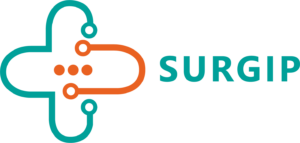The healthcare landscape is rapidly evolving, with a growing emphasis on efficiency, quality, and patient-centered care. Imagine a scenario where surgical operations are seamlessly orchestrated with precision and timeliness, optimizing resources and enhancing patient outcomes. This vision becomes a reality with the revolutionary streamlined surgical planning application. Let's delve into how this advanced solution is transforming the operating room scheduling process, ushering in a new era of operational excellence and cost savings in healthcare facilities.
The Need for Efficient Operating Room Scheduling
In the fast-paced environment of healthcare facilities, efficient operating room (OR) scheduling is paramount to ensuring smooth operations and optimal patient care. Traditional methods of scheduling have often proven to be cumbersome, leading to inefficiencies that can impact both staff productivity and patient outcomes.
Challenges Faced in Traditional OR Scheduling
-
Limited visibility into OR availability and utilization
-
Manual scheduling processes prone to errors and overlaps
-
Difficulty in accommodating last-minute changes and emergencies
Impact of Inefficiencies on Hospital Operations and Patient Care
-
Operational Delays: Inefficient scheduling can lead to delays in surgeries, affecting patient treatment timelines.
-
Resource Wastage: Poorly managed scheduling can result in underutilization of ORs and staff resources.
-
Patient Disatisfaction: Extended wait times due to scheduling issues can lead to patient dissatisfaction and reduced quality of care.
By implementing a streamlined surgical planning application, healthcare facilities can address these challenges and revolutionize their OR scheduling practices.
Introducing the Streamlined Surgical Planning Application
Healthcare facilities can now optimize their operating room (OR) scheduling processes with the innovative streamlined surgical planning application. This cutting-edge solution offers a comprehensive set of features designed to enhance efficiency and streamline surgical planning from start to finish.
Overview of the Features and Benefits
-
Real-Time Updates: Ensure up-to-the-minute scheduling changes are communicated instantly.
-
Resource Allocation: Optimize the allocation of ORs, staff, and equipment for maximum efficiency.
-
Predictive Analysis: Utilize data-driven insights for better decision-making and resource utilization.
-
Automated Documentation: Simplify compliance and accountability with automated record-keeping functionalities.
-
Cost Savings: Demonstrate the potential for significant cost savings and operational excellence.
By incorporating this advanced application into their workflow, healthcare providers can experience a transformative shift in their OR scheduling practices, leading to improved operational efficiency and enhanced patient care outcomes.
Enhancing Workflow Efficiency with Real-Time Updates
In the dynamic setting of surgical procedures, real-time updates play a crucial role in ensuring smooth and efficient workflow management. The streamlined surgical planning application offers features that facilitate instant communication and scheduling updates, thus optimizing the coordination of activities within the operating room environment.
Importance of Real-Time Scheduling Updates
-
Timely Communication: Instant notification of any changes in scheduling to all relevant staff members.
-
Minimized Errors: Reduction in scheduling conflicts and overlaps through real-time synchronization.
-
Improved Response Time: Ability to promptly address and adapt to unexpected events or emergencies.
By integrating real-time updates into the surgical planning process, healthcare providers can enhance productivity, minimize disruptions, and ultimately elevate the quality of patient care. This revolutionary application is a game-changer in promoting efficiency and transparency in OR scheduling practices.
Maximizing Resource Utilization with Data-Driven Insights
Efficient resource allocation is a critical component of successful surgical planning and execution. The streamlined surgical planning application leverages advanced data analytics to provide valuable insights that enable healthcare facilities to optimize their resource utilization, leading to enhanced operational efficiency and improved patient care outcomes.
Utilizing Data Analytics for Improved Resource Allocation
-
Demand Forecasting: Anticipate surgical caseloads and allocate resources accordingly.
-
Staff Allocation: Optimize staffing levels based on historical data and predictive analytics.
-
Equipment Utilization: Ensure the right equipment is available at the right time for each surgical procedure.
By harnessing the power of data-driven insights, healthcare providers can make informed decisions that result in more efficient use of resources, reduced costs, and ultimately, better patient care. The streamlined surgical planning application empowers facilities to achieve optimal utilization of their resources, maximizing both operational effectiveness and overall performance.
Ensuring Compliance and Accountability with Automated Documentation
In the healthcare industry, compliance with regulations and standards is paramount to ensure patient safety and quality of care. The streamlined surgical planning application offers automated documentation functionalities that simplify the process of maintaining records and ensure accountability throughout the surgical planning and execution stages.
Simplifying Documentation Processes for Compliance Purposes
-
Real-Time Documentation: Instantly capture and store essential information related to each surgical procedure.
-
Audit Trail: Maintain a comprehensive record of scheduling changes and actions taken by staff.
-
Regulatory Compliance: Ensure adherence to industry regulations and guidelines through automated documentation.
By implementing automated documentation features, healthcare facilities can streamline their compliance processes, reduce the risk of errors, and enhance transparency in their operations. The streamlined surgical planning application serves as a critical tool in promoting accountability and adherence to regulatory standards, ultimately contributing to improved patient outcomes and operational efficiency.
Achieving Cost Savings and Operational Excellence
The implementation of a comprehensive streamlined surgical planning application not only enhances operational efficiency but also results in significant cost savings for healthcare facilities. By leveraging the features and functionalities offered by the application, organizations can achieve operational excellence and improve their bottom line.
Demonstrating the Cost-Saving Potential
-
Resource Optimization: Efficient allocation of ORs, staff, and equipment minimizes resource wastage.
-
Reduced Downtime: Streamlined scheduling leads to better workflow management and reduced downtime between procedures.
-
Enhanced Productivity: Automation of tasks and processes increases staff productivity and reduces manual errors.
By embracing this innovative solution, healthcare providers can witness tangible cost savings, improved workflow efficiency, and overall operational excellence. The streamlined surgical planning application is a game-changing tool that paves the way for sustainable cost management and enhanced performance in surgical scheduling and execution.
How does the streamlined surgical planning application optimize OR scheduling?
The streamlined surgical planning application leverages real-time updates, data-driven insights, and automated documentation to enhance efficiency in OR scheduling. By providing instant communication, predictive analytics, and compliance features, the application streamlines workflow management, maximizes resource utilization, and ensures accountability throughout the surgical planning process.
Can the application adapt to last-minute scheduling changes?
Yes, the application is designed to accommodate last-minute changes seamlessly. With its real-time update capabilities and agile scheduling functionalities, the application enables healthcare facilities to respond promptly to emergencies, adjustments in surgical priorities, and other unforeseen circumstances while maintaining operational efficiency.
How does the application benefit from data analytics?
The application utilizes data analytics to offer valuable insights for improved resource allocation. By analyzing historical data and trends, healthcare providers can make informed decisions regarding staff scheduling, equipment utilization, and OR allocation. This data-driven approach enhances decision-making processes and optimizes resource usage for better operational outcomes.
Does the application support regulatory compliance?
Yes, the application includes automated documentation features that support regulatory compliance. By automating record-keeping and maintaining an audit trail of scheduling changes, the application helps healthcare facilities adhere to industry regulations and guidelines. This functionality enhances transparency, accountability, and regulatory compliance within the surgical planning process.
What cost-saving advantages does the application offer?
The application provides cost-saving advantages through optimized resource allocation and reduced downtime. By streamlining scheduling processes, minimizing resource wastage, and enhancing staff productivity, healthcare facilities can achieve significant cost savings while improving operational efficiency and quality of care.

